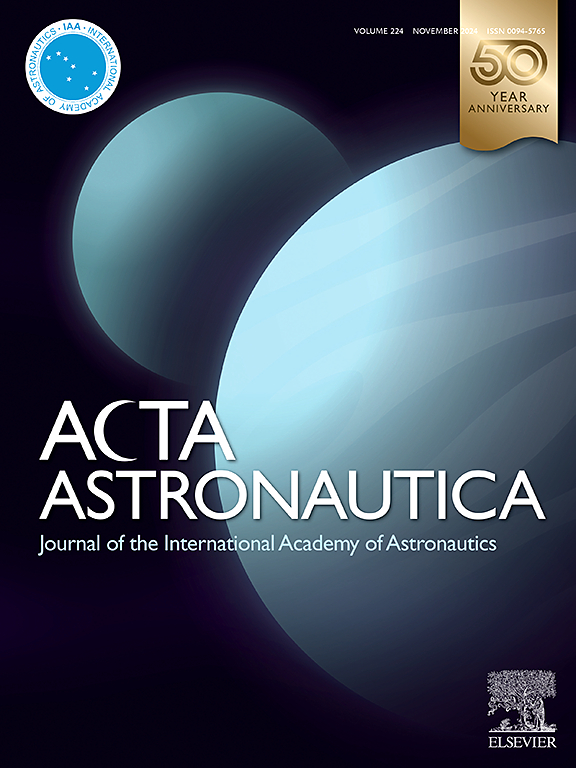基于物理学的新型计算框架,用于模拟退化情况下的航天器太阳能电池阵列功率:欧洲航天局(ESA)集群任务的应用
IF 3.1
2区 物理与天体物理
Q1 ENGINEERING, AEROSPACE
引用次数: 0
摘要
航天器太阳能电池阵列功率衰减情况的精确建模和仿真(M&S)对于飞行任务规划、剩余使用寿命评估和寿命延长至关重要。一个相关的例子是欧空局于 2000 年发射并在欧洲空间运行中心(ESOC)运行的 Cluster 航天器群,其太阳能电池阵列因空间辐射而严重退化,给日常运行和任务规划带来了挑战。然而,目前可用的物理模型和机器学习模型已被证明无法有效模拟航天器在长期运行期间发电量的急剧下降。它嵌入了一个新颖的简化物理模型和一个元启发式优化算法,该算法利用特定领域的知识和监测数据进行稳健的模型参数校准和准确的发电量预测。结果表明,所提出的方法能有效避免过拟合,并能准确估计簇状太阳能电池阵的功率变化。本文章由计算机程序翻译,如有差异,请以英文原文为准。
A novel physics-based computational framework to model spacecraft solar array power under degradation: Application to European Space Agency (ESA) Cluster mission
Accurate modeling and simulation (M&S) of spacecraft solar array power under degradation is essential for mission planning, remaining useful life assessment, and lifetime extension. A relevant example is ESA’s Cluster spacecraft fleet, launched in 2000 and operated at the European Space Operation Centre (ESOC), whose solar arrays have suffered severe degradation due to space radiation that has caused challenges to routine operations and mission planning. However, currently available physics-based and machine learning models have been proven ineffective in modeling the drastic reduction in power generation over the long operational life of the spacecraft.
In response to these limitations, this work introduces a framework to model solar array degradation and predict power generation. It embeds a novel simplified physics-based model and a meta-heuristic optimization algorithm which exploits domain-specific knowledge and monitoring data for robust model parameter calibration and accurate power generation predictions. The results show the effectiveness of the proposed approach in avoiding overfitting and providing an accurate estimate of Cluster solar array power evolution.
求助全文
通过发布文献求助,成功后即可免费获取论文全文。
去求助
来源期刊

Acta Astronautica
工程技术-工程:宇航
CiteScore
7.20
自引率
22.90%
发文量
599
审稿时长
53 days
期刊介绍:
Acta Astronautica is sponsored by the International Academy of Astronautics. Content is based on original contributions in all fields of basic, engineering, life and social space sciences and of space technology related to:
The peaceful scientific exploration of space,
Its exploitation for human welfare and progress,
Conception, design, development and operation of space-borne and Earth-based systems,
In addition to regular issues, the journal publishes selected proceedings of the annual International Astronautical Congress (IAC), transactions of the IAA and special issues on topics of current interest, such as microgravity, space station technology, geostationary orbits, and space economics. Other subject areas include satellite technology, space transportation and communications, space energy, power and propulsion, astrodynamics, extraterrestrial intelligence and Earth observations.
 求助内容:
求助内容: 应助结果提醒方式:
应助结果提醒方式:


